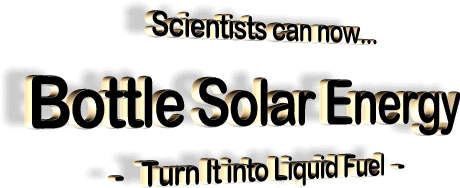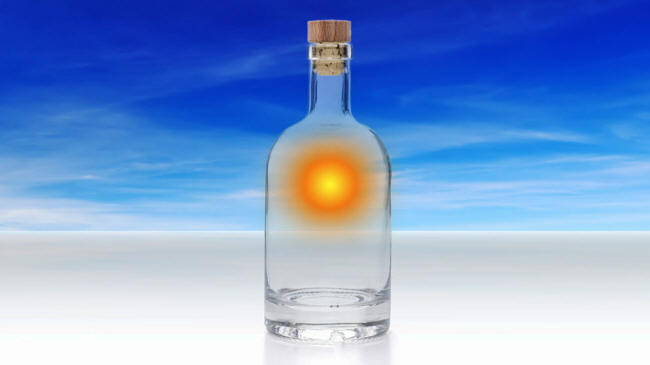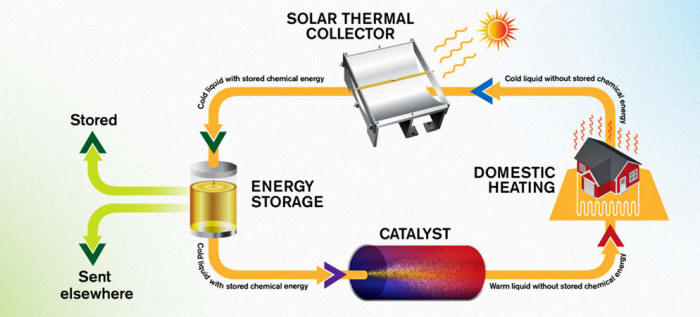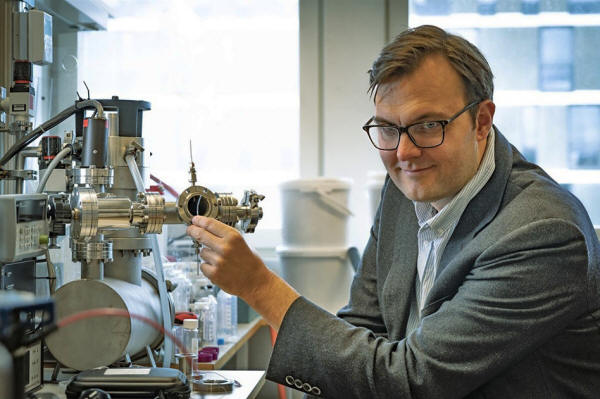|
from
BigThink Website
has always been storage. Now, bottled sunshine has a shelf-life of 18 years...
They developed a liquid fuel containing the compound norbornadiene that - when struck by sunlight - rearranges its carbon, hydrogen, and nitrogen atoms into an energy-storing isomer, quadricyclane.
Quadricyclane holds onto the energy, estimated to be up to 250 watt-hours of energy per kilogram, even after it cools and for an extended period of time. For use, it's passed through a cobalt-based catalyst, at which point the energy is released as heat.
The team's research could
be a breakthrough in making solar energy transportable and thus even
more usable for meeting real-world energy needs.
It can be used over and over again.
As a result, the scientists envision a round-trip energy system they
call
MOST, which stands for Molecular Solar Thermal Energy Storage.
The MOST system
The collector focuses sunlight on that pipe, and the fuel running through it, causing the transformation of norbornadiene into quadricyclane. The charged fuel then flows through transparent tubing into storage tanks, or it can be diverted and shipped elsewhere for use.
Says Kasper Moth-Poulsen in the Chalmers press release,
To release the fuel's energy, it's passed through the catalyst in which a chemical reaction occurs to convert the fuel back into liquid whose temperature has been boosted by 63°C or 145°F.
So, for example, if the fuel goes into the catalyst at 20°C, it comes out at 83°C.
In this form, the fluid can be used for heating a home or business, or be used in any other system reliant on heated liquid.
This last year has
been a key time
holds
the tube containing the MOST catalyst
Though other researchers have experimented with similar uses for norbornadiene, their fuels broke down after just a few cycles before their research was abandoned.
Those earlier fuels also didn't hold the energy very long. The Chalmers team also originally had to mix their isomer with flammable toluene.
Now, however, they've worked out a way to use the isomer without dangerous additives.
One remaining limiting factor has been finding ways of storing solar energy that are as clean as solar energy itself. Much work is being down with batteries, but it's difficult to produce power cells without using toxic materials.
The 'MOST system' offers an
exciting new angle to pursue...
|




